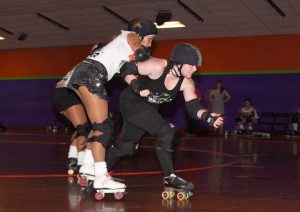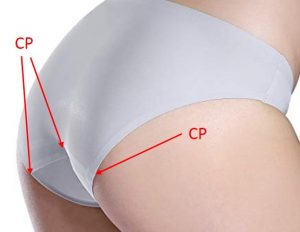Numb Toes and the search for something Mighty in the water…
Okay I’ll start by saying this is a rant post, but also a call to anyone out there who might know of a better way.
Since I am currently benched from running, due to continued neuropathy in my left foot which began somewhere around mile 40 of 111 at SnowDrop, I have decided to hit the pool for no-impact cardio, until such time as I can feel my toes again. I have been to an OMT, and a Chiropractor, and read every article I could find on the internet around what I have going on, and the bottom (of my foot) line is that it is nerve trauma or pinched either steaming from my L4 & L5, or it is isolated to the foot. Given the medical treatment options for either of those areas, my best bet is to go the therapeutic route and give it time and see if it will heal on it’s own, which is typically what happens, and is recommended. So that leaves me little options but to strength train, stretch and do no impact to the likely traumatized areas. So I borrowed an inversion chair from Trex and hang like a bat at least once a day in my garage. Thus far I don’t know that it’s helping, but it isn’t hurting, so great.
That said I am more than a little worried about making cut-off times at our Prairie Grudge match, without being able to run between now and then. I am also worried about the further trauma that running 100 miles will cause, because I do still plan to run that race. I, like Trex, have observed the noticeable increase in my RHR, which means my endurance abilities are taking a hit. It’s a growing source of anxiety, among other things in my life, which running usually keeps at bay. While my body is trying to heal, I really don’t need the added stress, so that leaves me trying to find other ways to drown my thoughts, and well, as much as I enjoy the ever so rare adult beverage, it would have the opposite effect on my healing tissues and mental health to hit the sauce, so that leaves the damn pool.
Now, for the record, I love swimming as a sport. As mentioned before I was a competitive swimmer. It’s kinda a thing I was good at. But it’s not running, and I have a sh*t ton of running shoes and gear that will not do me any good in the water. So I need to seriously hit the water harder, which leads me to my rant….
In the last two decades I have moved away from owning music, in a library of files that I had to backup and copy from computer to computer, to become a completely iTunes free streaming consumer. It all started with Pandora, and then overtime I have become a paid Amazon Unlimited customer. I recently added the Garmin Fenix 6 to my gear list, which solved the problem, for me, on how I could ditch my phone for my runs and Bluetooth my Amazon Music playlists offline to my wireless headphones. Yeah me. It only cost around $750 to get a few more bells and whistles which I also use for playing in the mud, not just listening to music.
The problem is that my Garmin plays music to my headphones via Bluetooth, which doesn’t work underwater. Trust me, it’s just the laws of physics at play here, not user error. As stated above, I do not own any MP3 music anymore–retiring my iPod years and years ago, so the current ‘SwimP3’ options that are pretty much what swimmers are forced to use, don’t fit my needs as a music streamer at all. This ‘option’ basically requires you to download a Ripper / Recorder software to your computer and then to “record” streamed music songs from YouTube to MP3 files. A) I am not sure how legal all that is. B) That sets me back a decade to when I dumped my music library, and C) I don’t have the time or patience for all that hoopla [Insert Sweet Brown Meme here]. Seriously is pool tech more than a decade behind???
Insert Temper Tantrum Image Here
That question landed me to searching around for other streaming devices that might be on the market. So frankly when I became aware that today there exists only one option, the Delphine Waterproof MicoTablet ($200), at least that I could find, that allows you to play either encrypted offline stored or online music from a Streaming service like Amazon and Spotify on a waterproof devices with wired headphones I was more than a little annoyed. While it seems like a good idea, frankly the concept of the touchscreen for sport usage doesn’t execute well, especially on a device worn on your head in the water.
So I continued my search, surely someone else out there has needs like me, who can’t use their phone, or their watches to play their music and who just need a simple, easy to use, reasonably priced, device that is capable of storing the encrypted files from streaming services for offline playback. Well it turns out there are other people out there who think that it is a Mighty good idea to ditch their phones for a tiny lightweight audio player for rugged athletic use. I am referring to the good people at Mighty Audio who have brought us the Mighty Vibe (no, it’s not the adult device you are thinking of, it’s also great for kids too. Okay ya worse still I know. Way worse!)
It is 99% what I am looking for, it’s just not waterproof, although it is water resistant. So that took me to their Contact Us page to ask the question:
“Does the Mighty Team plan to make a waterproof IX7 or 8 rated version of your product for use underwater (aka lap swimming) with wired waterproof headphones like the Swimbuds? If not PLEASE PLEASE PLEASE, I am begging you to consider us poor water treaders. We need you! If by some miracle your amazing team is way ahead of me on this one, first let me say THANK YOU. Second, any idea when we could maybe hope to see such a device hit the virtual shelves? And third, is there any chance I could help you beta test it?”
I will post an update if I hear anything back. In the meantime I have ordered from Amazon, two separate stupid damn waterproof swiMP3 devices, H2o Audio’s STREAM w/ waterproof wired headphones, and a pair of Aftershokz Xtrainerz. I ordered the first because it would arrive fast, and was $60 cheaper than the Aftershokz. But afterwards, I debated that decision. The first device I ordered fits on my goggles on the back of my head, and according to some reviews, because it is Bluetooth enabled, it can reach your phone on the side of the pool since it is typically above water, and the headphones are wired. But, honestly I don’t see me wanting to use this for running or working out. It would only really have the one use. So after I ordered it I begrudgingly decided to get the Aftershokz instead. Although they are pricey, and they don’t have Bluetooth–I am sure they did this so people wouldn’t try to use it in the water and send it back; I can still use them for running and working out at the gym, I just can’t get calls from my cell phone, not a huge issue but annoying. Sigh. In for a pound in for a penny.
So I will be spending my one Mom day off this year (MLK Day), searching for and recording songs down to mp3 from YouTube, so I can use songs to put on the headphones when they arrive. This is going to take precious hours, hours of my life I will never get back, all because there isn’t a decent, simple waterproof solution yet on the market. Seriously I feel like a kid waiting with my finger on the Play and Record button listening to the radio.
Hopeful for better pool tech news for 2020, and or for feeling in my toes
Sincerely,
(Sad) Bunny

 I own several pairs. That seam shows under leggings and tight skirts. I have to go with a thong if I truly want seamless. I have looked and looked and I thought I had found the
I own several pairs. That seam shows under leggings and tight skirts. I have to go with a thong if I truly want seamless. I have looked and looked and I thought I had found the